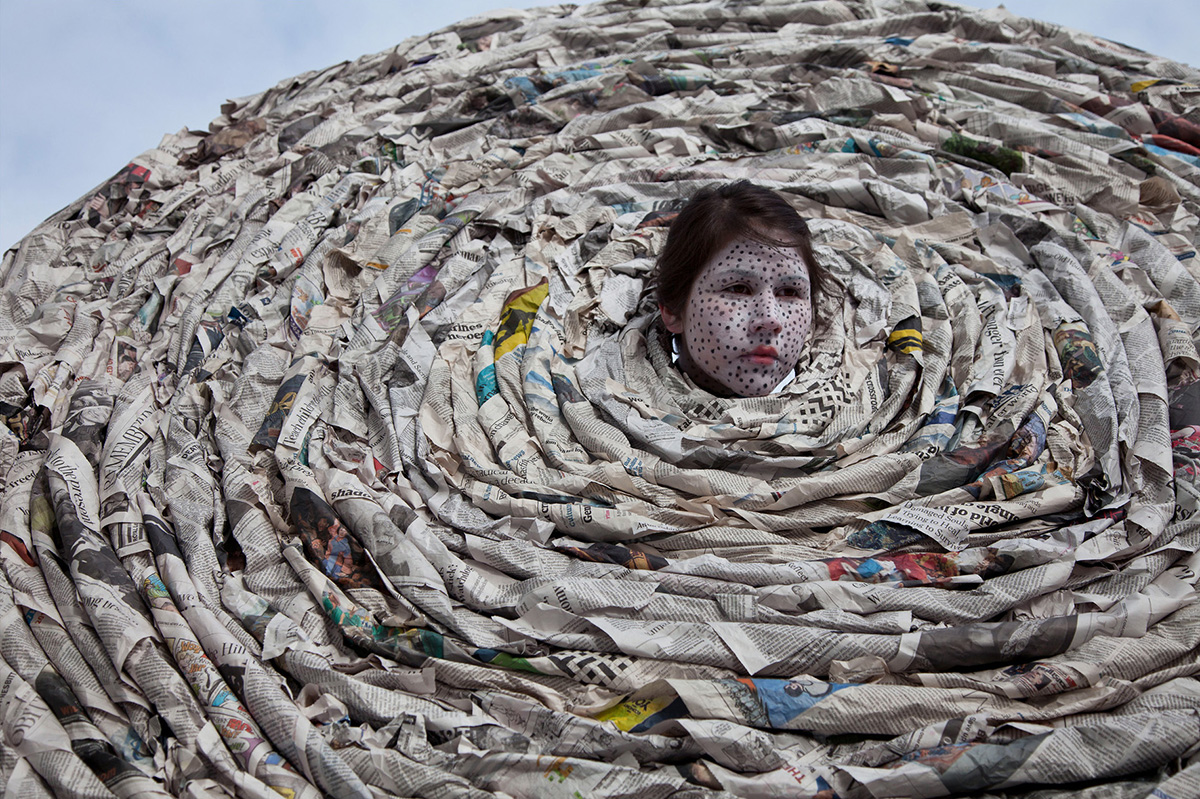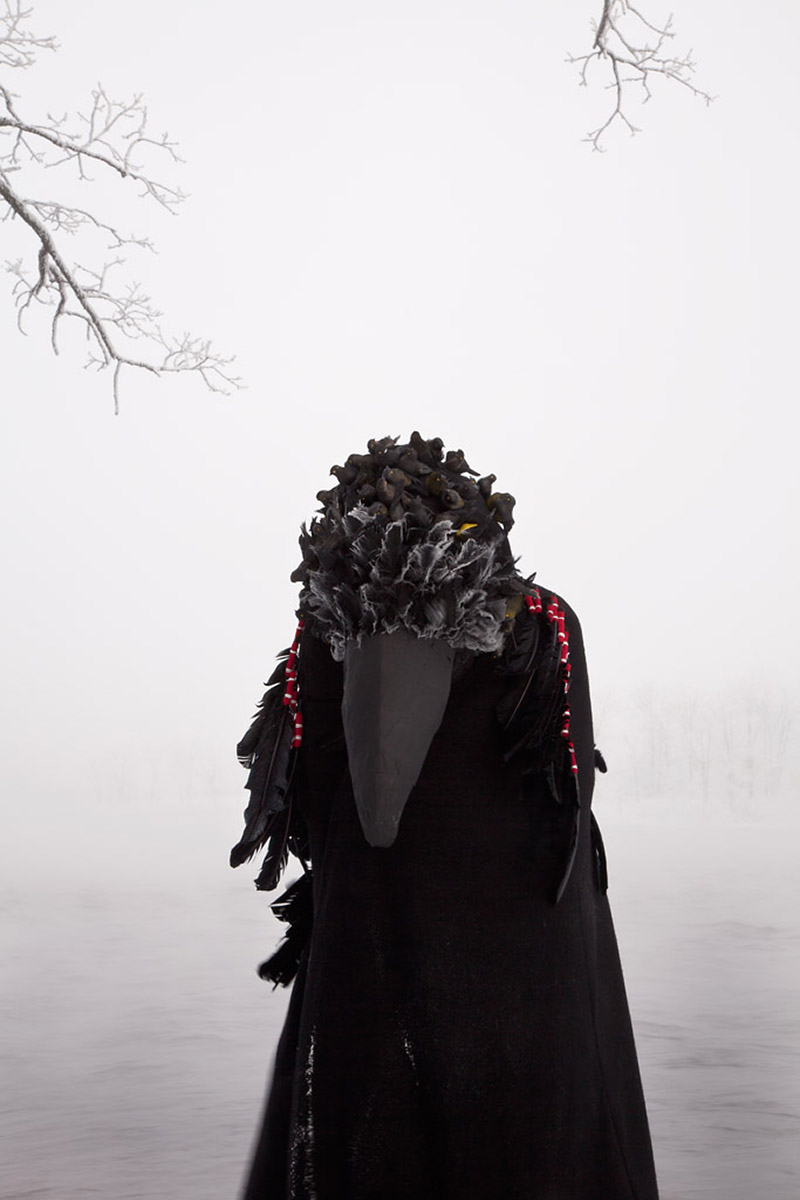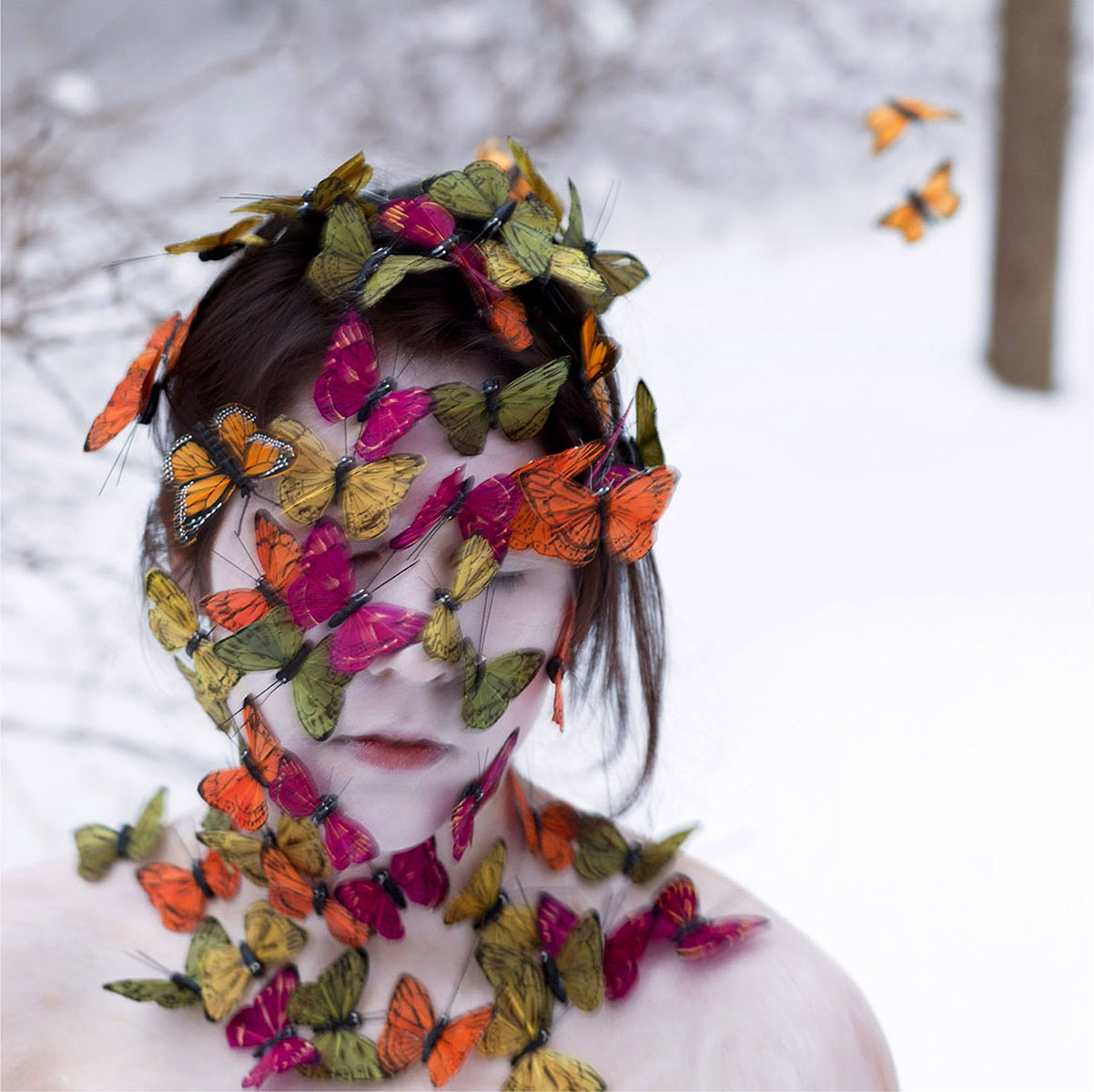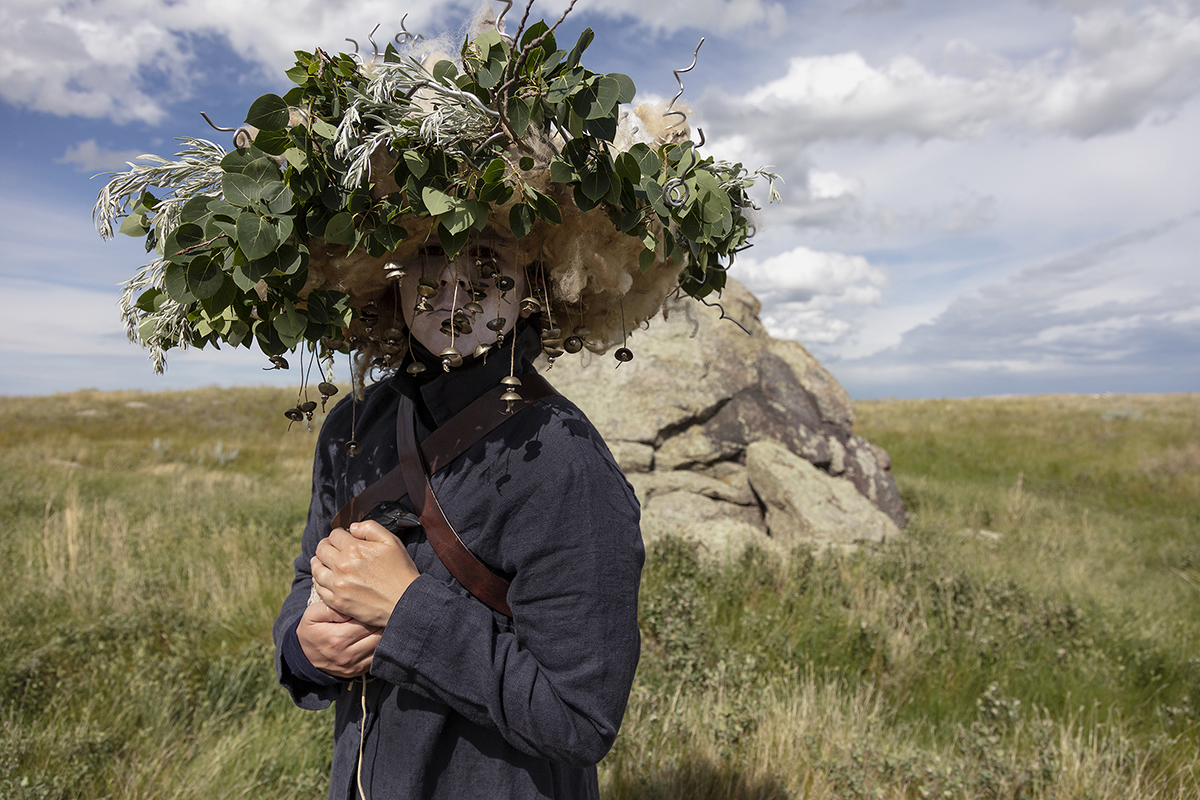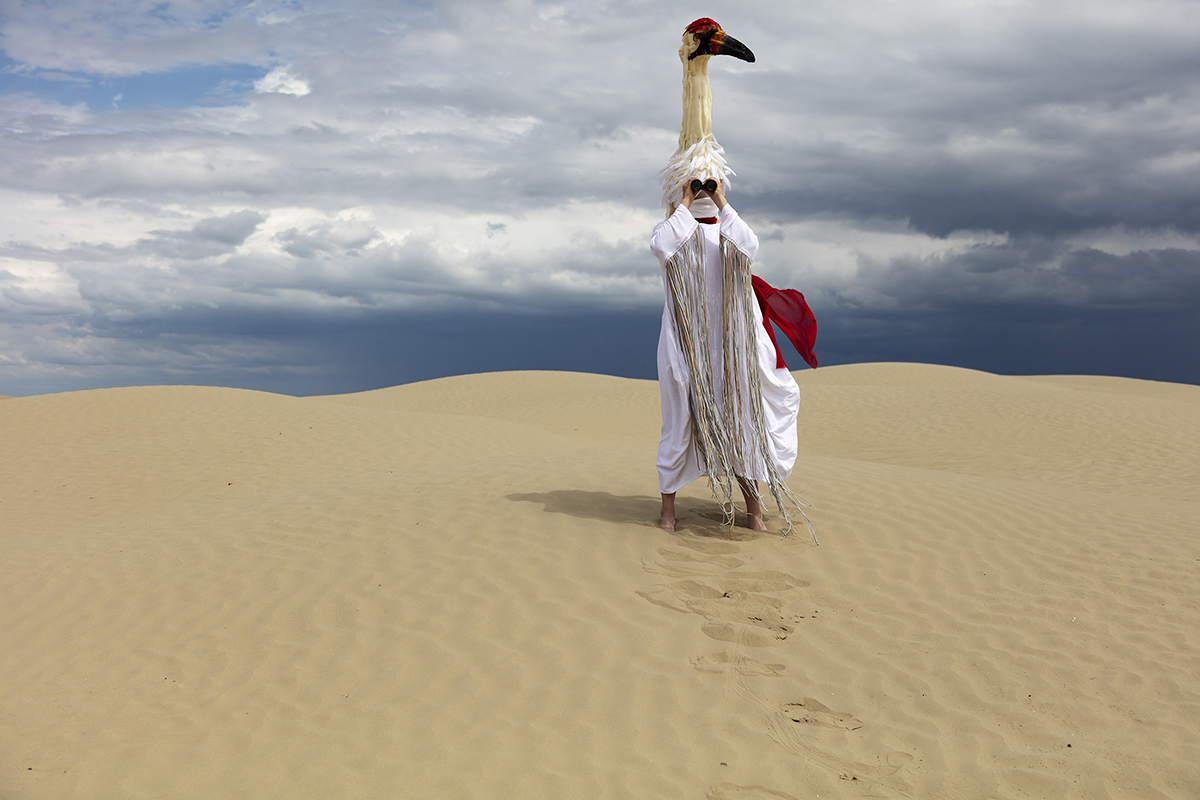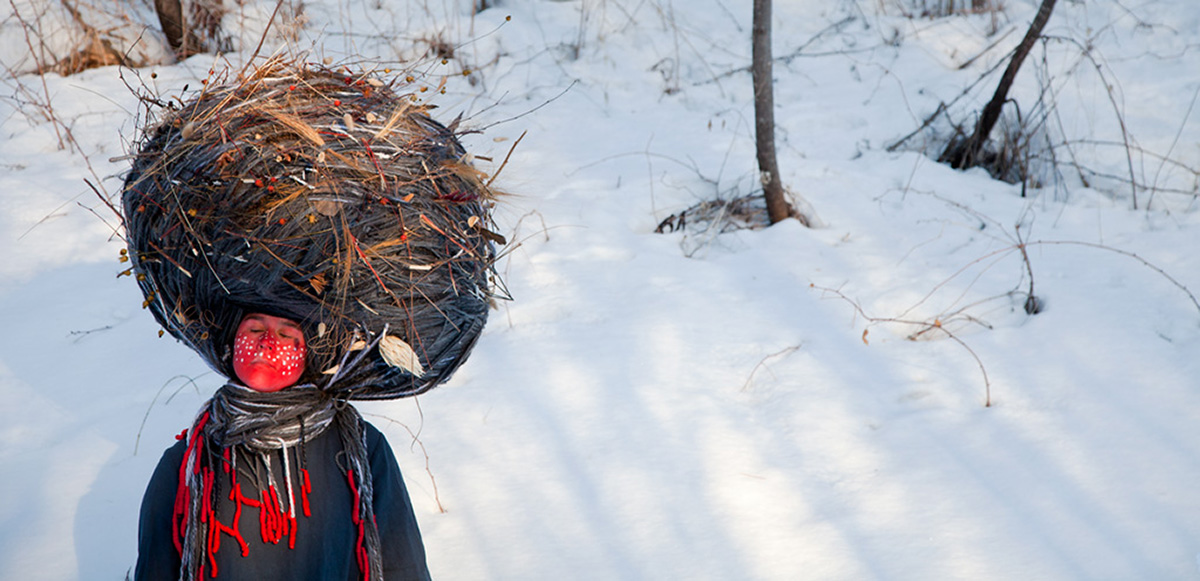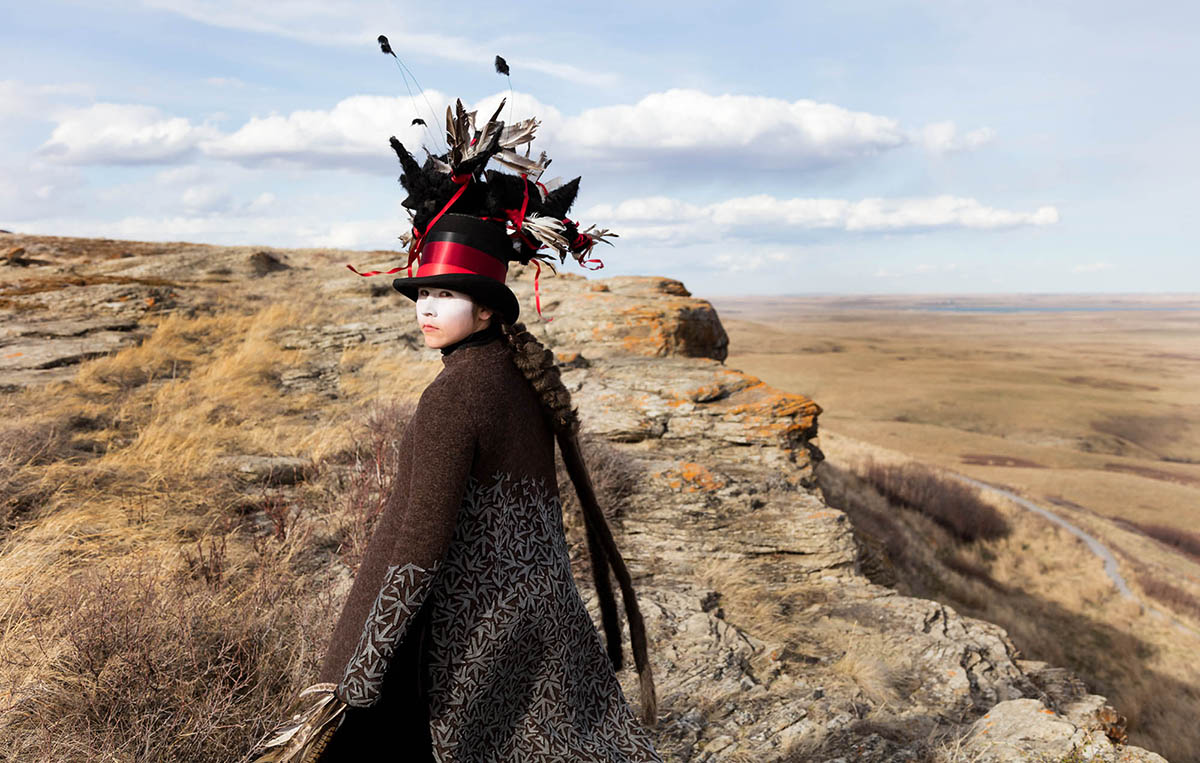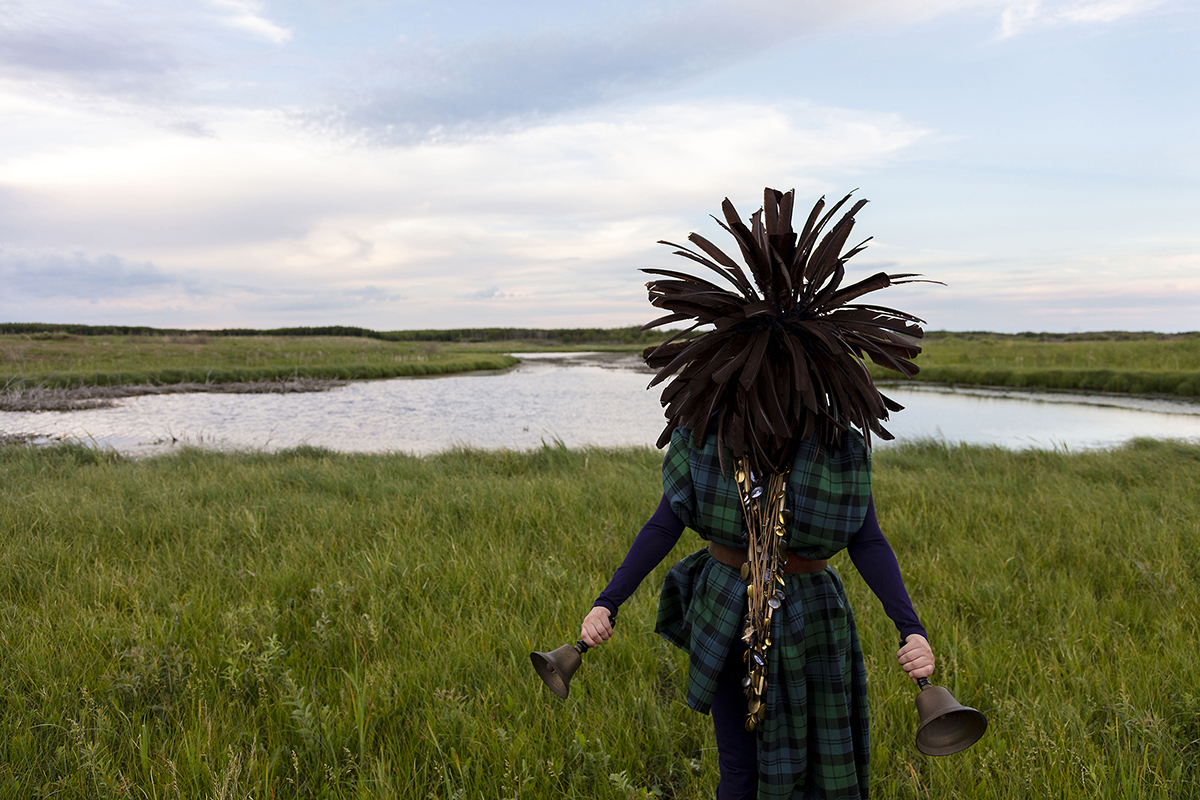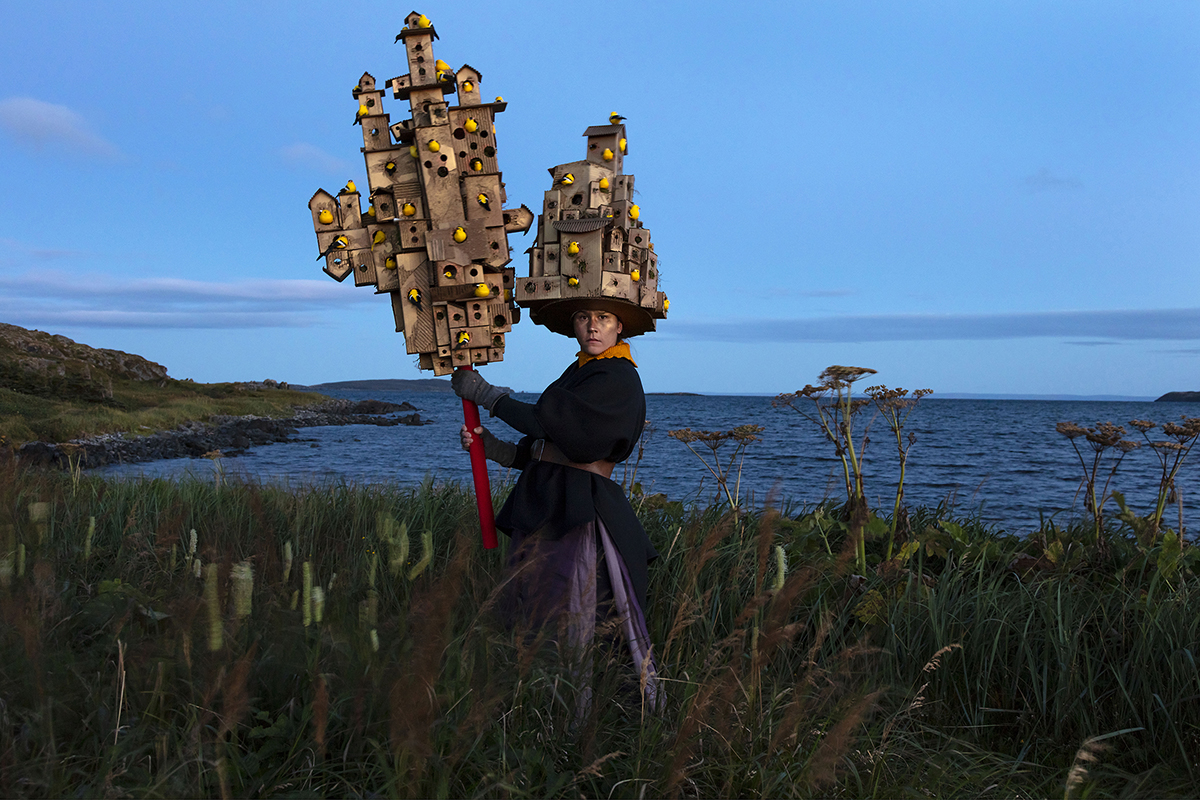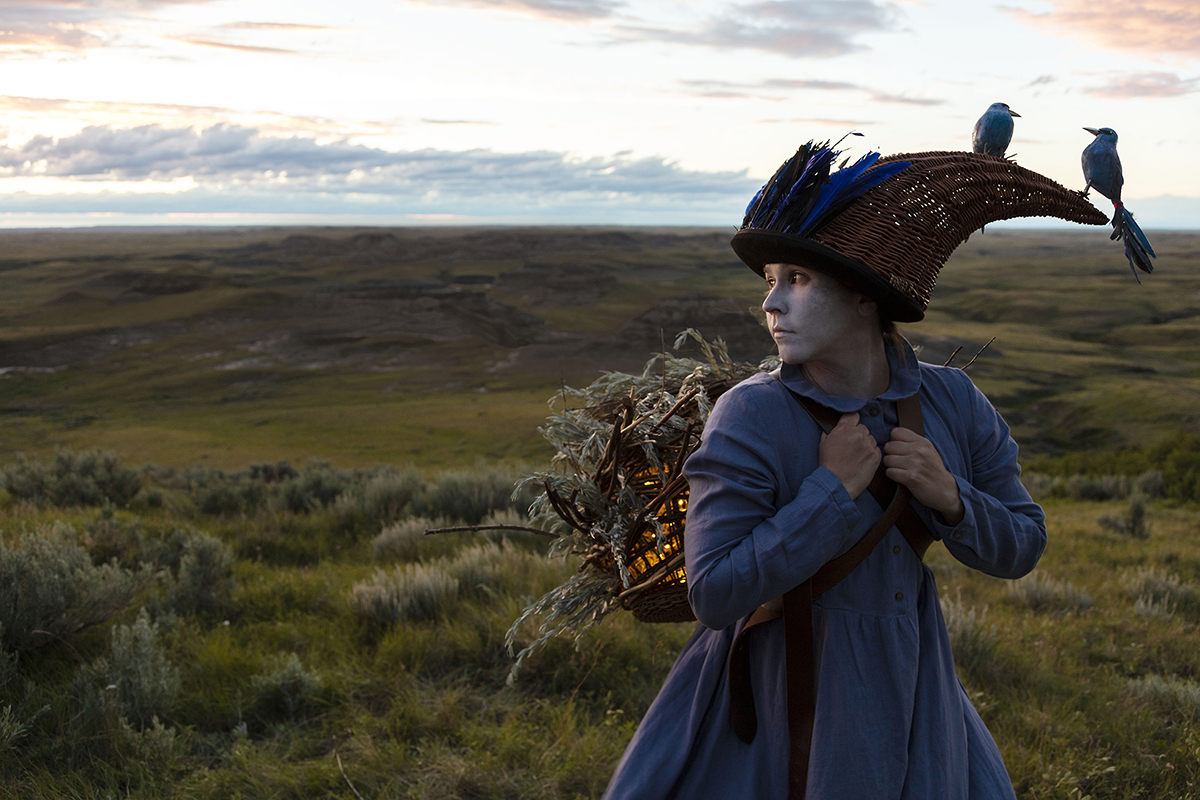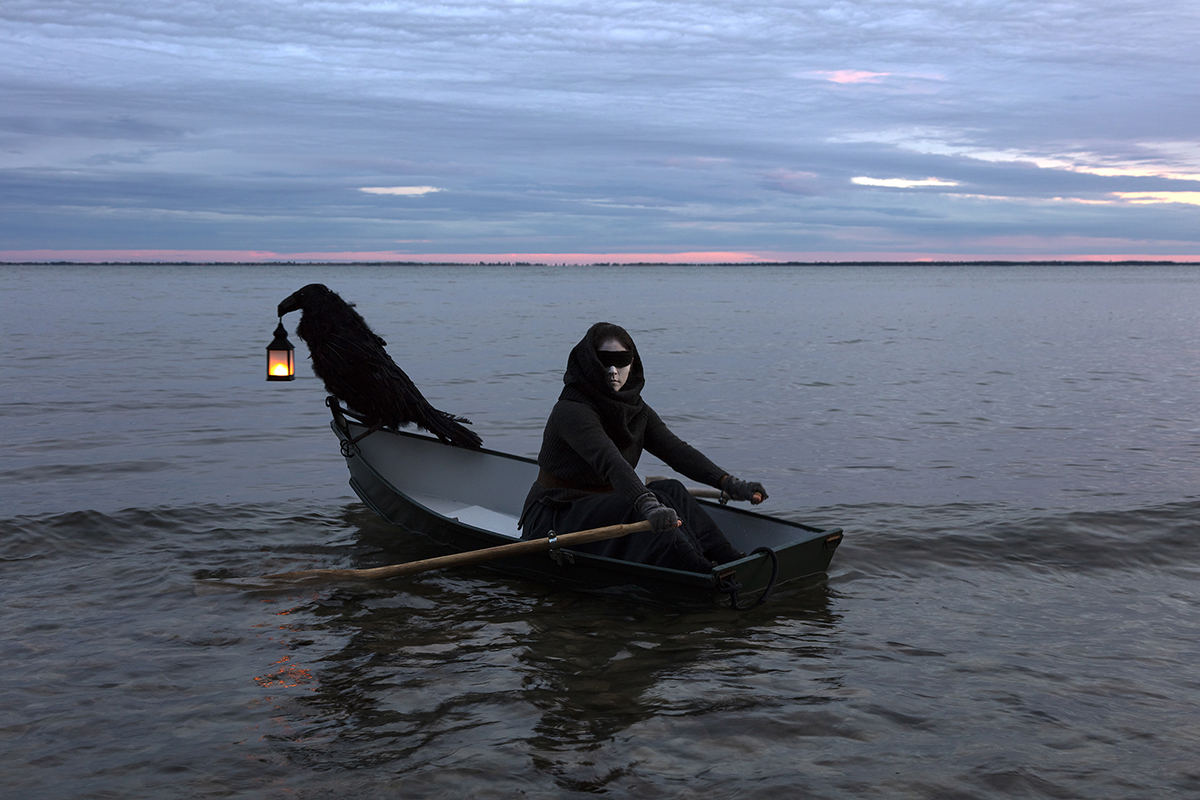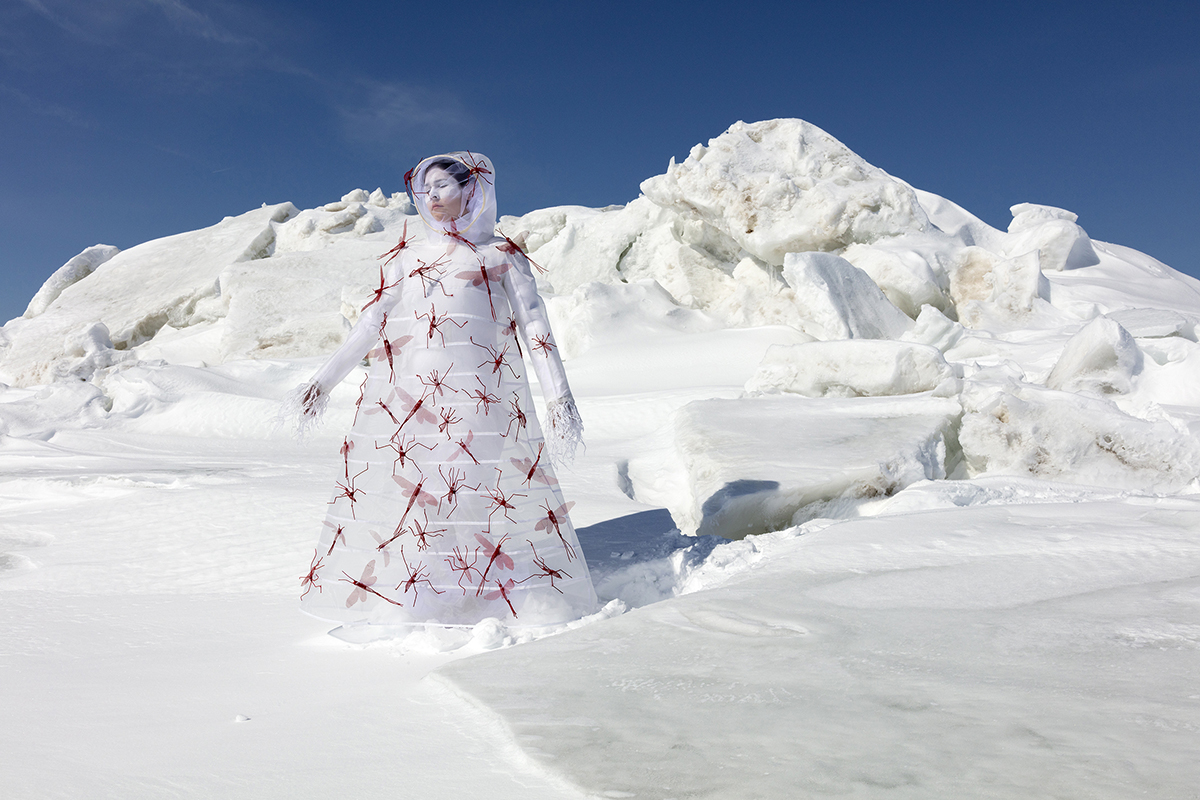Spirit: Focus on Indigenous Art, Artists, and Issues: Meryl McMaster
This week we partner with the National Center for Civil and Human Rights to share the work of Indigenous Artists. As written by our curator, Donna Garcia: “this initiative should educate the public, through lens-based art, regarding the true history of indigenous people and recruit allies/advocates for indigenous issues everywhere, but with a specific focus on the US and Canada, where native lands and people аre still coming under attack everyday.”
Meryl McMaster uses photography to explore identity and its distinct cultural narratives within lush, spectacular natural landscapes that evoke ancient folklore and myth with extraordinary visual impact. Her cinematic style connects still life, sculpture, narrative and performance. Meryl draws on her own mixed heritage, her mother being of British/Dutch ancestry and her father a Plains Cree native, to explore important themes and issues of representation.
Creating symbolic, sculptural garments and props, McMaster assumes diverse personas, such as a dream catcher or wanderer, often transforming herself into hybrid animal-human creatures. Her performative self-portraits present themes around memory and self, which are both actual and imaginative, and allow the viewer into the realms of her ancestors. Each tableau contains references to a multitude of stories and traditions from diverse Indigenous communities. These scenes often recall the Romantic tradition of the solitary figure in nature from traditional literature and painting.
Through the process of self-portraiture, McMaster also embodies the “shifts” of her subjects depending on the natural environment and the costumes. She does not do public performances. In one solitary moment, she creates a story, which may look like its part of a film, part of a dream sequence, a storybook or recounting history. She describes her pictures as “private performances that are responding to memory and to emotion in different ways.”
These captivating images аre captured across ancestral sites in Saskatchewan, where Meryl father’s ancestors are from as members of the Red Pheasant First Nation, and have lived for many hundreds of years, and the area is very significant to her family. Also, early settlements in Ontario and Newfoundland, where the artist interprets, and re- stages collected patrimonial stories from relatives and community knowledge keepers.
Acknowledging the personal and social history and effects of colonization, McMaster contemplates how ancestral stories are imprinted into the landscape by the people who once lived there, as well as those who still reside there. Meryl states, “These are very powerful, overwhelming places, with all kinds of history buried within these landforms that predates human existence.”
McMaster presents herself in nature, viewing the environment and seasons as an integral part of the cultural context while addressing the environmental consequences of colonization. She warns of the dangers of unsustainable land usage and the eradication of key species within ancestral ecosystems.
One of McMaster’s reoccurring motifs is of birds. She reveals that she has always had a fascination with birds because they can see from different perspectives, fly, and can look down on the world in a way that humans can’t. They offer this freedom. They appear as her companions and as messengers in a lot of her images. This can be drawn out from both Indigenous Plains Cree storytelling and European folklore. The raven has a particular significance in the mythical creation story as being a cultural hero. He saved the humans, animals and plants by putting the sun, which had been stolen, back into the sky.
McMaster focuses on the spiritual richness of her heritage, rather than the inherent conflict between colonizers and colonized, although the trauma of that legacy is ever present in her careful use of the color red, illustrating the idea of both bloodshed and bloodlines. One of McMaster’s aims is to reframe and enlarge understandings of Indigenous cultures beyond western stereotypes to convey their beauty and complexities.
Positioning herself within the landscape, Meryl McMaster emphasizes the interdependence between humans and nature and, consequently, the urgent need to cherish our environment.
Meryl McMaster earned her BFA in Photography from the Ontario College of Art and Design University (2010) and is currently based in Ottawa, Canada. McMaster’s work has been the subject of solo exhibitions at Canada House, London (2020), Ikon Gallery, Birmingham (2019), Ryerson Image Centre, Toronto (2019), Glenbow, Calgary (2019), The Room, St. John’s (2018) Momenta Biennale, Montreal (2017), Museum of Contemporary Native Arts, Santa Fe (2015), and Smithsonian National Museum of the American Indian, New York (2015), amongst others. From 2016-2020 her solo exhibition Confluence travelled to nine cities in Canada, including stops at the Richmond Art Gallery (2017), Thunder Bay Art Gallery, Thunder Bay (2017), University of Lethbridge Art Gallery, Lethbridge (2018), and The Judith and Norman Alix Art Gallery, Sarnia (2020). Her work has also appeared in group exhibitions at Carleton University Art Gallery, Ottawa (2020), Australian Centre for Photography, Australia (2019), National Gallery of Canada, Ottawa (2018), Ottawa Art Gallery (2018, 2019), Kitchener Waterloo Art Gallery (2016, 2019), the Musée national des beaux-arts du Québec (2019), Plug In Institute for Contemporary Art, Winnipeg (2017), and Art Gallery of Guelph (2017), amongst others. She was longlisted for the 2016 Sobey Art Award and is the recipient of numerous awards including the Scotiabank New Generation Photography Award, REVEAL Indigenous Art Award, Charles Pachter Prize for Emerging Artists, Canon Canada Prize, Eiteljorg Contemporary Art Fellowship and OCAD U Medal. Her work has been collected by significant Canadian institutions, including the Art Gallery of Ontario, Toronto; Montreal Museum of Fine Art; and the National Gallery of Canada, Ottawa. Instagram: @meryl_mcmaster
My practice can be described as performance photography in which I am the subject viewed within various dreamlike scenarios before the camera. The themes I explore are self in relation to land, lineage, history, culture and the more-than-human world. My methodology begins in the studio where I create labour-intensive objects and sculptural garments that are used as theatrical props that are transported to site-specific locations for the photographic performance. Many of the images I create are focused on various tensions involved in the mixing and transforming of my bi-cultural identity – nêhiyaw (Plains Cree)/British/Dutch – and the conflict found at the intersection of self-exploration and heritage. Through this process I attempt to extend the boundaries of identity in hopes of empowering myself and others to re-examine our understanding of self. – Meryl McMaster
About the Editor:
Donna Garcia’s work illustrate a semiotic dislocation that has been organically reconstructed in a way that gives her subjects a voice in the present moment; something they didn’t have in the past. Her images rise above what they actually are and become empathetic recreations in a fine art narrative. She has an MFA in Photography from Savannah College of Art and Design and her work has been exhibited internationally. She is a 2019 nominee of reGENERATION 4: The Challenges of Photography and the Museum of Tomorrow. Musee de l’Elysee, Lausanne, Switzerland. Emerging Artists to Watch, Fine Art Photography, Nomination (only 250 lens-based emerging artists nominated worldwide).
About the National Center for Civil and Human Rights:
The National Center for Civil and Human Rights is a cultural institution and advocacy organization located in downtown Atlanta, Georgia. Powerful and immersive exhibits tell the story of the American Civil Rights Movement and connect this history to modern struggles for human rights around the world. The National Center for Civil and Human Rights has the distinction of being one of the only places to permanently display the papers and artifacts of Dr. Martin Luther King, Jr. Events, educational programs, and campaign initiatives bring together communities and prominent thought leaders on rights issues. For more information, visit civilandhumanrights.org and equaldignity.org. Also sign up for Campaign for Equal Dignity!
Join the conversation on @ctr4chr (Twitter), @ctr4chr (Facebook), and @ctr4chr (Instagram).
Posts on Lenscratch may not be reproduced without the permission of the Lenscratch staff and the photographer.
Recommended
-
Salua Ares: Absense as FormNovember 29th, 2025
-
Ricardo Miguel Hernández: When the memory turns to dust and Beyond PainNovember 28th, 2025
-
Pamela Landau Connolly: Columbus DriveNovember 26th, 2025
-
KELIY ANDERSON-STALEY: Wilderness No longer at the Edge of ThingsNovember 19th, 2025
-
Jackie Mulder: Thought TrailsNovember 18th, 2025

